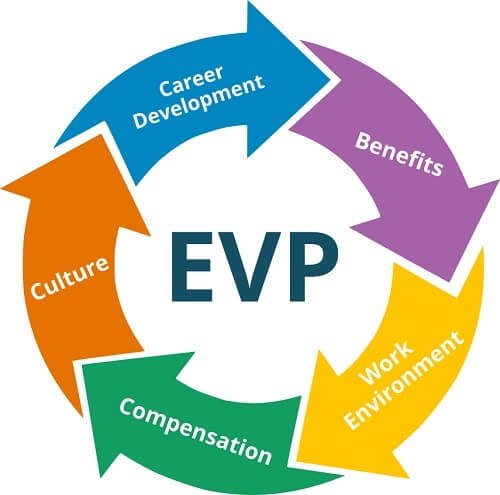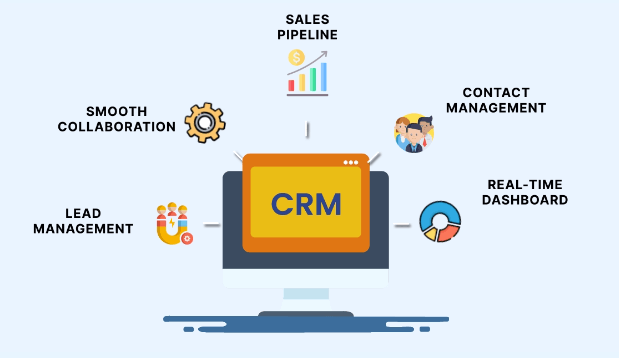Reinventing The Employer Value Proposition: An Analysis and Practical Model
Reinventing the Employer Value Proposition is a strategic endeavor that requires a deep understanding of employee expectations, market trends, and organizational values.

In today’s competitive job market, companies are increasingly recognizing the importance of a compelling Employer Value Proposition (EVP) to attract and retain top talent. The EVP is essentially the promise an organization makes to its employees in return for their skills, capabilities, and experiences. It encompasses the company’s values, culture, and benefits, and is critical for differentiating an employer from its competitors. However, as the landscape of work evolves with remote work, changing employee expectations, and an emphasis on diversity and inclusion, many organizations find themselves needing to reinvent their EVPs to stay relevant and appealing. This article explores the nuances of reinventing the EVP, providing a comprehensive analysis and practical model to guide organizations through the process.
Understanding the Employer Value Proposition
The EVP is a strategic tool that outlines the unique set of benefits and rewards employees receive from their employer. It reflects the company's brand and values, and it serves as a key component of the employer brand. A well-defined EVP helps in attracting the right talent, retaining employees, and enhancing overall engagement. The traditional EVPs often focused on tangible benefits such as salary, bonuses, and career development opportunities. However, modern EVPs need to encompass a broader range of elements, including work-life balance, workplace culture, and alignment with personal values.
Why Reinvent the Employer Value Proposition?
Several factors necessitate the reinvention of the EVP:
Changing Workforce Expectations: The rise of remote work, flexible hours, and work-life balance has shifted employee expectations. Today's workforce values flexibility and a supportive work environment over traditional perks.
Diversity and Inclusion: A growing emphasis on diversity, equity, and inclusion (DEI) requires EVPs to reflect a commitment to these principles. Companies must demonstrate how they foster an inclusive culture and support diverse talent.
Employer Brand Differentiation: In a crowded job market, a unique and authentic EVP helps differentiate a company from its competitors. It needs to resonate with potential employees and reflect the company's true values.
Economic and Social Changes: Economic uncertainty and social movements have changed how employees view their jobs and employers. Companies need to address these concerns in their EVPs to remain attractive.
Key Components of a Modern EVP
To reinvent the EVP effectively, organizations should consider the following components:
Core Values and Culture: The EVP should clearly communicate the organization's core values and culture. This includes the company’s mission, vision, and the behaviors it encourages. It should reflect a supportive, inclusive, and engaging work environment.
Career Development and Growth Opportunities: Employees are increasingly looking for opportunities to advance their careers. A modern EVP should highlight pathways for professional development, training programs, mentorship, and career progression.
Work-Life Balance and Flexibility: Offering flexible work arrangements, remote work options, and a focus on work-life balance are critical aspects of a contemporary EVP. It should address how the organization supports employees in managing their personal and professional lives.
Compensation and Benefits: While traditional benefits like salary and bonuses remain important, modern EVPs also include non-monetary benefits such as wellness programs, employee recognition, and perks that enhance quality of life.
Diversity, Equity, and Inclusion: The EVP should articulate the company's commitment to DEI. This includes policies, practices, and initiatives that promote a diverse and inclusive workplace.
Corporate Social Responsibility (CSR): Employees are increasingly concerned about the impact of their employer on society and the environment. A strong EVP should include the company’s CSR efforts and its commitment to ethical practices and sustainability.
Steps to Reinvent the Employer Value Proposition
1. Conduct a Thorough Internal Assessment
Begin by assessing the current state of your EVP. This involves gathering feedback from current employees, analyzing turnover rates, and evaluating the company’s current benefits and policies. Conduct surveys, focus groups, and one-on-one interviews to understand what employees value most and where there may be gaps in the current EVP.
2. Benchmark Against Competitors
Analyze the EVPs of key competitors and industry leaders. This benchmarking process will provide insights into what other companies are offering and help identify opportunities for differentiation. Evaluate competitors' strengths and weaknesses to ensure your EVP stands out in the job market.
3. Define Core Values and Culture
Clearly define your organization’s core values and culture. This involves articulating the principles that guide behavior and decision-making within the company. Ensure that these values are not only aspirational but also reflected in day-to-day operations and employee interactions.
4. Develop a Comprehensive EVP Framework
Create a detailed framework for your new EVP. This should include:
- Key Messaging: Craft clear and compelling messages that communicate the unique aspects of your EVP.
- Employee Value Proposition Statement: Develop a concise statement that encapsulates the essence of your EVP.
- Supporting Elements: Outline the specific benefits, career development opportunities, and cultural aspects that support the EVP.
5. Engage Stakeholders and Communicate the EVP
Engage key stakeholders, including leadership, HR, and marketing teams, in the EVP development process. Ensure that the EVP is communicated effectively both internally and externally. Use various channels such as company websites, social media, and recruitment materials to promote the new EVP.
6. Implement and Monitor
Roll out the revised EVP across the organization. Ensure that it is integrated into recruitment processes, employee onboarding, and internal communications. Continuously monitor the effectiveness of the EVP by soliciting feedback from employees and tracking metrics such as employee engagement, retention rates, and recruitment success.
Practical Model for Reinventing Your EVP
Step 1: Employee Feedback Collection
Collect feedback through surveys and focus groups to understand employee needs and expectations. Analyze this data to identify common themes and areas for improvement.
Step 2: Competitive Analysis
Research the EVPs of industry competitors. Identify trends and gaps to help shape a unique and compelling EVP for your organization.
Step 3: Core Values Articulation
Work with leadership to define the core values and culture that will be the foundation of your EVP. Ensure alignment with the company’s mission and vision.
Step 4: EVP Development
Create a comprehensive EVP framework that includes key messaging, a value proposition statement, and supporting elements. Make sure the framework addresses the needs and expectations identified in earlier steps.
Step 5: Stakeholder Engagement
Engage with stakeholders to refine and finalize the EVP. Ensure that all relevant departments are aligned with the new EVP and understand their role in its implementation.
Step 6: Communication and Rollout
Develop a communication plan to introduce the new EVP to employees and potential candidates. Use various platforms and channels to ensure broad reach and understanding.
Step 7: Monitoring and Adjustment
Implement mechanisms to track the effectiveness of the EVP. Regularly review employee feedback and performance metrics to make necessary adjustments and improvements.
Reinventing the Employer Value Proposition is a strategic endeavor that requires a deep understanding of employee expectations, market trends, and organizational values. By following a structured approach to assess, develop, and implement a modern EVP, organizations can enhance their ability to attract and retain top talent. A compelling and authentic EVP not only differentiates a company in a competitive job market but also fosters a positive and engaging workplace culture. As the workforce continues to evolve, staying ahead with a well-crafted EVP will be crucial for organizational success and employee satisfaction.
FAQs: Reinventing The Employer Value Proposition
What is an Employer Value Proposition (EVP)?
An Employer Value Proposition (EVP) is a statement that summarizes the unique set of benefits, rewards, and opportunities an organization offers to its employees in exchange for their skills, capabilities, and experiences. It reflects the company’s values, culture, and what makes it an attractive place to work.
Why is it important to reinvent the EVP?
Reinventing the EVP is crucial due to changing workforce expectations, increased focus on diversity and inclusion, heightened competition in the job market, and evolving economic and social conditions. A modern EVP helps differentiate your company, attract top talent, and retain employees by aligning with their values and expectations.
What are the key components of a modern EVP?
The key components of a modern EVP include:
- Core Values and Culture: Clearly articulated company values and an engaging work environment.
- Career Development and Growth Opportunities: Pathways for professional advancement and training.
- Work-Life Balance and Flexibility: Flexible work arrangements and support for work-life balance.
- Compensation and Benefits: Competitive salary, bonuses, wellness programs, and other perks.
- Diversity, Equity, and Inclusion (DEI): Commitment to fostering an inclusive and diverse workplace.
- Corporate Social Responsibility (CSR): Efforts towards ethical practices and sustainability.
How do I assess my current EVP?
To assess your current EVP, gather feedback from employees through surveys, focus groups, and interviews. Analyze turnover rates, employee satisfaction levels, and the effectiveness of current benefits and policies. This will help identify gaps and areas for improvement.
What is involved in benchmarking against competitors?
Benchmarking involves researching and analyzing the EVPs of key competitors and industry leaders. Evaluate their offerings, strengths, and weaknesses to understand what differentiates them and identify opportunities to make your EVP unique and compelling.
How do I define core values and culture for my EVP?
Define your core values and culture by articulating the principles that guide behavior and decision-making within your organization. Ensure these values are integrated into daily operations and employee interactions, and reflect them clearly in your EVP.
What steps are involved in developing a comprehensive EVP framework?
Developing a comprehensive EVP framework involves:
- Key Messaging: Crafting clear messages that highlight the unique aspects of your EVP.
- EVP Statement: Creating a concise statement that summarizes the essence of your EVP.
- Supporting Elements: Outlining specific benefits, career development opportunities, and cultural aspects that support the EVP.
How can I effectively communicate the new EVP to employees and potential candidates?
Communicate the new EVP through various channels such as the company website, social media, and recruitment materials. Ensure that internal communications, including newsletters and meetings, reinforce the new EVP. Engage employees in discussions to ensure they understand and embrace the changes.
What should I do to monitor the effectiveness of the new EVP?
Monitor the effectiveness of the new EVP by tracking metrics such as employee engagement, retention rates, and recruitment success. Regularly gather feedback from employees and candidates to assess how well the EVP resonates and make adjustments as needed.
How do I address issues related to employee feedback in the EVP reinvention process?
Address employee feedback by analyzing common themes and concerns from surveys and focus groups. Incorporate this feedback into the EVP framework to ensure it meets the needs and expectations of your workforce. Continuously seek feedback and be prepared to make ongoing adjustments.
What role does diversity, equity, and inclusion play in the modern EVP?
DEI is a critical component of the modern EVP. A strong EVP should demonstrate the company’s commitment to creating an inclusive and equitable workplace. This includes having clear policies, practices, and initiatives that support diversity and ensure all employees feel valued and included.
How can I ensure that the new EVP aligns with our company’s mission and vision?
Ensure alignment by involving leadership in the EVP development process. The EVP should reflect the company’s mission and vision, integrating these elements into the core values and cultural aspects outlined in the EVP framework.
What are some common challenges in reinventing the EVP and how can they be overcome?
Common challenges include resistance to change, misalignment with company culture, and difficulty in clearly articulating the new EVP. Overcome these challenges by engaging stakeholders early in the process, communicating transparently, and ensuring the EVP is grounded in authentic company values and practices.
How often should the EVP be reviewed and updated?
The EVP should be reviewed and updated regularly to reflect changes in workforce expectations, market conditions, and company goals. Conduct reviews at least annually or whenever significant changes occur within the organization or the job market.
What are the benefits of a well-crafted EVP for the organization?
A well-crafted EVP helps attract and retain top talent, enhances employee engagement and satisfaction, improves employer branding, and differentiates the company from competitors. It fosters a positive workplace culture and aligns employee values with organizational goals.
By addressing these frequently asked questions, organizations can better understand the process and importance of reinventing their Employer Value Proposition, ensuring it effectively meets the needs of today’s dynamic workforce.
Get in Touch
Website – www.webinfomatrix.com
Mobile - +91 9212306116
Whatsapp – https://call.whatsapp.com/voice/9rqVJyqSNMhpdFkKPZGYKj
Skype – shalabh.mishra
Telegram – shalabhmishra
Email - info@webinfomatrix.com
What's Your Reaction?




















